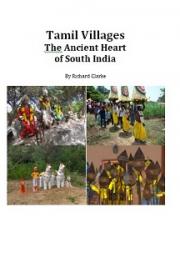Appendices
[1]
The belief that semen has to be introduced into young boys is found among many
people of Papua New Guinea. The Etoro and Kaluli, for example, “inseminate”
boys when they are 10 years old until they carry a beard. In the same way, the
Onobasulu compare a non-inseminated boy to a sowed garden that could not be
cultivated. The Baruya end their initiation by ingesting semen. The coastal
tribes think that little girls at the age of 8 have to have sexual
relationships with adult males in order to store semen that will serve to
fortify the semen of their future spouse. According to Bruce Knauft, girls
agree gladly to this ritual, convinced that it is beneficial to their
fertility.
Although these practices provoked reactions of horror in the ‘civilized’ world,
the psycho-historian Lloyd DeMause came to the following conclusion: “Of the several hundred anthropologists whose
work I have researched, I found none who said pederasty was detrimental,
agreeing instead with the New Guinea natives that it was both desired by and
beneficial to the victims.” [DeMause, 2002]
[2]
Numboolyu has breasts, and a penis so small that he does not know what to do
with it. By incising his foreskin, Chenchi allows the penis to become beautiful
and strong. As for Numboolyu, he makes on Chenchi a vertical incision that
becomes a vagina.
BADINTER Elisabeth
(1992): XY. De l’identité masculine.
Paris, Odile Jacob, 111-112
[3]
It is difficult for us to imagine the ties that unite men of this community,
men that generation after generation have gone through such rituals. The
hostile, and sometimes extremely hostile environment in which these tribes
live, as well as the continuous state of war they are in, might make such
fusion necessary for their survival.
BADINTER Elisabeth (1992): Op. cit.,
114-116
[4]
A clear difference exists between the cyclical vision of life and death, in
which death is part of the same process as life, all two being complementary
and indispensable to each other, and the dualist approach where life and death
are in distinct opposition, one being the antithesis of the other, as it has
been introduced by the Greek philosophers during the Axial Age.
FRAZER James G. (1922): The Golden Bough. A study of magic and
religion. The Gutenberg Project. Release Date: January, 2003 [EBook #3623]
[5]
Until the 18th century in England, it was the custom to close the room of the
deceased.
HERTZ Robert (1928): Sociologie religieuse et folklore. Recueil de textes
publiés entre 1907 et 1917. Première édition. Paris, Les Presses universitaires
de France (1970), 2e édition, 208 pp. Collection: Bibliothèque de sociologie contemporaine.
Chicoutimi, Édition complétée (2003), 53 (tr. by the author)
[6] In Çayönü (Turkey), the famous ‘skull
building’ contained more than 70 skulls and 400 bodies.
[7]
Edward Tylor [1920] mentions innumerable legends relating to the walling up of
living beings during the construction of buildings. They might find their
source in these customs of the Neolithic.
[8]
In Çatalhöyük (Turkey), several skulls of children were found with cervical
vertebras still attached, indicating a primary burial.
[9]
The team of Nigel Goring-Morris who conducted excavations at this site found
several carcasses of aurochs, complete but headless, as well as a human body
whose bones had been rearranged in order to represent an animal. The fact that
decapitation was not only reserved for humans but could also be applied to
animals makes it possible to establish a parallel between death and hunting. If
these animals had caused the death of the hunter, their decapitation and burial
might offer a way to restore the harmony between the two entities, a quest
symbolized by the animal representation given to the man’s remains. [See also Appendix
Lang, Unity of the animate and inanimate
world]
CHENEVIERE Alain (1986):
Le dernier matin du monde. Paris,
Éditions Hologrammme, 108 (tr. by the author)
LEVY-BRUHL Lucien (1935):
La Mythologie Primitive. Le monde
mythique des Australiens et des Papous. Edition électronique réalisée
Jean-Marie Tremblay, Chicoutimi (2002), 33 (tr. by the author)
CLEMENT
Catherine & KRISTEVA Julia (1998): Le féminin et le sacré. Paris, Stock, 49 (tr. by the author)
The Laws of Manu, I, 12-13; in Bühler, Georg Bühler,
translator (1886). The Sacred Books of the East, vol. XXV. Oxford, Clarendon
Press, 6
DOBRIZHOFFER Martin
(1822): An Account of the Abipones, an
Equestrian People of Paraguay. London, Murray
[10]
[11] Sorcerers
LANG Andrew (1887): Myth, Ritual,
and Religion. London, Longmans, Green and Co
[12] In French in the original English text. “The savages are convinced that not only men
and other animals, but also all other things are alive” and “They hold fish and also deer as reasonable.”
(tr. by the author)
SPENCER Baldwin (1914): Native Tribes
of the Northern Territory of Australia. London, Macmillan
[14] Aboriginal girl or woman
[15] When a community is distributed along
two parental lines, these are called moieties (from the French ‘moitié’).
[16] The author uses here the feminine form
to refer to this ancestor.
TYLOR Edward B. (1920): Primitive
Culture. Researches Into The Development Of Mythology, Philosophy, Religion,
Language, Art, And Custom. London, John Murray
FLANNERY Kent V. (1972):
The Cultural Evolution of Civilizations.
Annual Review of Ecology and Systematics, Vol. 3, 399-426
LEE Gary (1979): Marital
Structure and Economic Systems. Journal of Marriage and the Family, Vol.
41, No. 4, 701-713
Hammurabi's Code of Laws Translated
by L.W. King (1910). University of Evansville.
http://eawc.evansville.edu/anthology/hammurabi.htm
[17] Money was weighted. The unit was the
shekel. Forty shekel was a mina.
^ ^ ^ ^ ^







